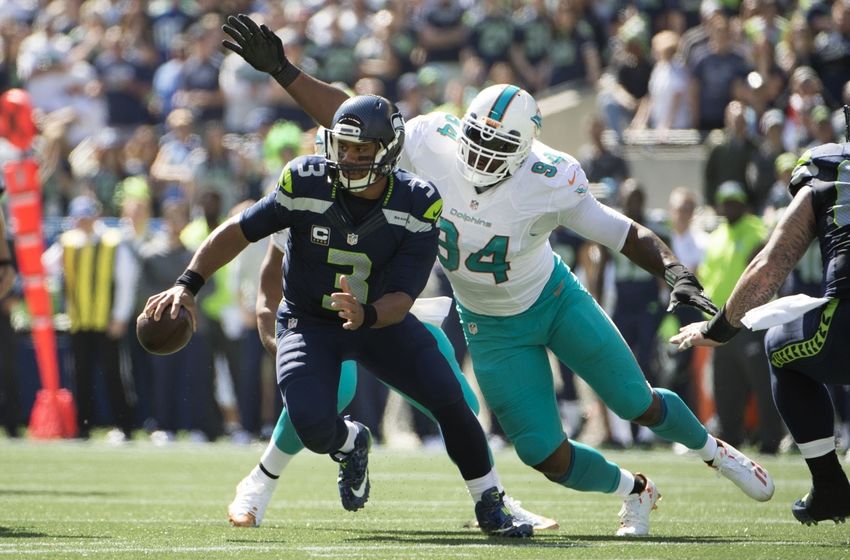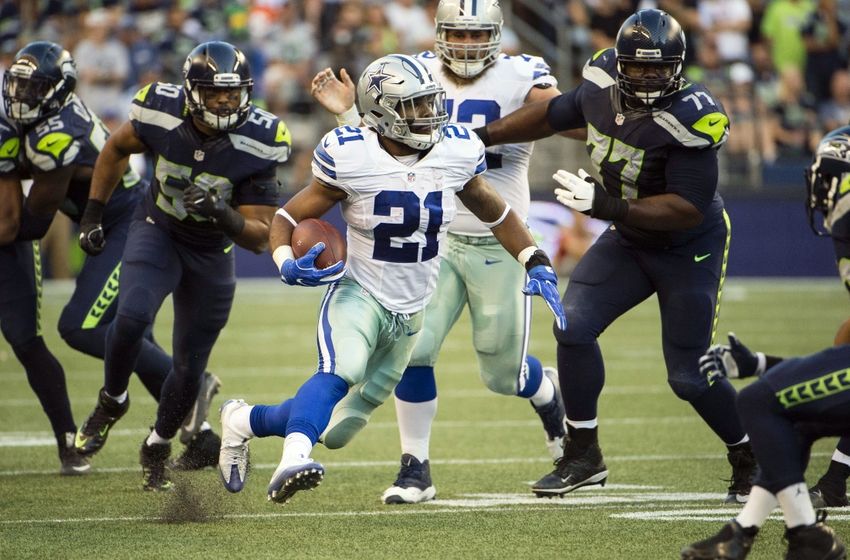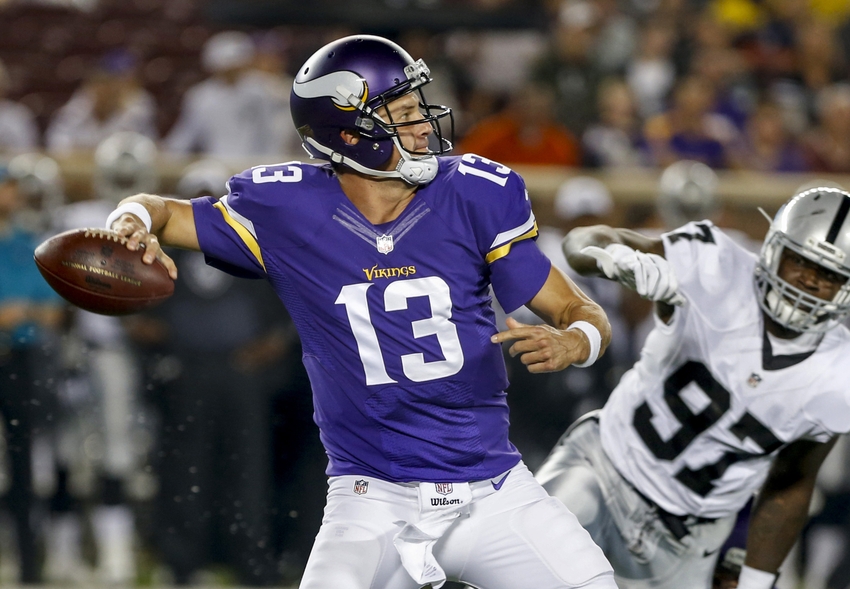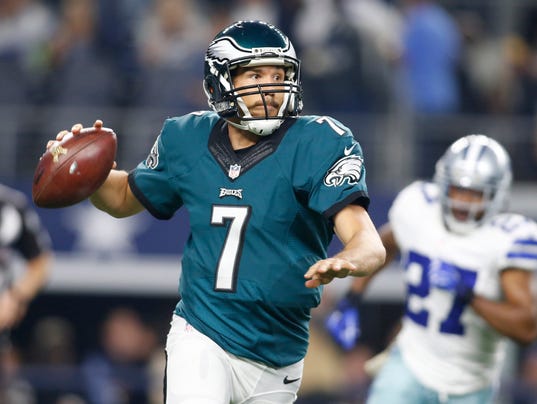We are three weeks into the NFL
season, and so far all but five teams have lost at least one game. Five
undefeated teams seems like a strangely low number at this early juncture, and
it’s even stranger when we look closer and realize which five teams these are.
Through three weeks in the NFL
season, I don’t think anyone could have predicted these five as the final
undefeated teams. New England came into the season facing four games without
their Hall of Fame quarterback, and it somehow got even more difficult when
they were forced to turn to their third stringer after Week 2. The Broncos are
the defending Super Bowl Champions, but they are starting a former seventh
round pick who had more interceptions than touchdowns in his college career.
The Ravens are an aging team coming off a miserable season, and the Vikings and
Eagles spent the week prior to the start of the season playing a game of
quarterback musical chairs.
Every year an unexpected team
gets off to a hot start, but this season is something else entirely. Typical
favorites Seattle, Green Bay, and Pittsburgh have all lost a game. Carolina,
Indianapolis, and Arizona have each lost two. Carson Palmer, Aaron Rodgers, Cam
Newton, and Ben Roethlisberger have struggled, while the combination of Jimmy Garoppolo,
Jacoby Brissett, Carson Wentz, Joe Flacco, Trevor Siemian, Shaun Hill, and Sam
Bradford have yet to lose a game.
Before we go any further, we
should be smart about how far we’re willing to take this. The quarterback has
always been the most important position in sports, and this has only become
truer over recent years, as rules and offenses have adapted to put even greater
responsibility into his hands. So it’s understandable that some people are
viewing the beginning of this season as a breath of fresh air, a sign that
there may be hope out there for teams without a superstar at the position.
I’m not buying it. By the end of
the year I think we’ll see things as we’re used to seeing them, with MVP
caliber quarterback play carrying the elites of the league above the more
mediocre options. But it’s definitely not as clearcut as some (myself included)
have made it out to be. The five undefeated teams have shown pieces of the
formula that can be used to find success without a star under center, a formula
that very well could lead them to continued success over the rest of the
season.
New England Patriots
Coaching
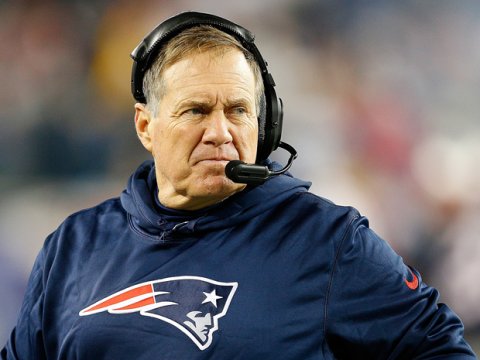
It will be very interesting to
see, when all is said and done, what the final reputation of Bill Belichick is.
He is inarguably one of the greatest coaches of all time, but the more seasons
pass and the more remarkable things he achieves, I find myself starting to
believe he might just be the greatest coach of all time.
Football fans are a bit over the
top when it comes to tradition, and it is difficult for any modern coach to
join the ranks of Lombardi and Brown and Walsh. But Belichick has every right
to be in that conversation, and possibly to lead it.
Belichick has appeared in six
Super Bowls, more than any other head coach. He has won four of them, matched
by only Chuck Noll. He has done this in an era where the salary cap and free
agency make it almost impossible to sustain success over a period of a decade.
And he keeps going strong, as players move in and out of his system and the league
changes around him.
Against all of this, winning
three games with Garoppolo and Brissett is a relatively minor achievement. But
the way he did it highlights just how much better he is than every other coach
in the league. Many coaches get wrapped up in believing that they know the
proper way to do things, and that it is their responsibility to train their
players to use their systems. This is the mistake that Chip Kelly made in
Philadelphia, and that Rex Ryan is currently continuing to make in Buffalo.
Belichick is smarter than that.
Garoppolo and Brissett are not Tom Brady, so he hasn’t been using them like
Brady. The offense the Patriots have constructed over the past few years has
been an instruction in efficiency, carving through defenses with an endless
barrage of underneath passes spreading from sideline to sideline. And while the
offense under Garoppolo was very similar to this, the one he threw out on four
days notice with Brissett was something else entirely.
Brissett isn’t the most mobile passer
in the world, but he is far more mobile than Brady ever has been. And Belichick
did not shy away from this, using the younger, more athletic player to attack
the defense with misdirection. Options, bootlegs, all sorts of new wrinkles
appeared in New England’s offense when they switched away from Garoppolo, an
entirely new system that they built in the span of four days.
It’s almost unfair that the
Patriots are going to get Brady back after this week. They don’t need him, as
they’ve proven in jumping out to a two game lead in the AFC East this year.
With the Jets, Bills, and Dolphins falling apart, the Patriots have the easiest
road forward in the league, and the brilliant mind of their coach will only
make things easier.
Denver Broncos
Pay Someone Else
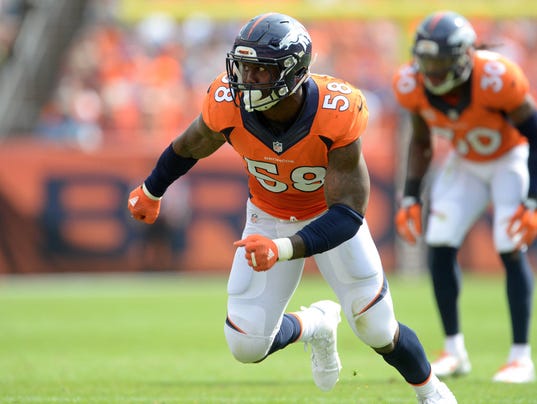
The Broncos found themselves in a
very unusual position this offseason. While still celebrating their Super Bowl
victory, they had to turn their gaze ahead, to answering the most pressing
issue a team can face: who is going to start at quarterback? Peyton Manning was
a shell of himself last year, but he did enough to ride this defense to a
championship, and that itself is hard to find, in a league where any shred of
hope at the position is buried under stacks of money.
The clearest example of this came
when Brock Osweiler, the assumed heir apparent in Denver, left town for an
insane $72 million deal in Houston. The Broncos had plenty of space below the
salary cap, and they could have matched or even exceeded this number. But,
making a bold decision, John Elway decided to let Osweiler go, trusting that he
could find another solution out there.
The solution Denver found isn’t
one that anybody expected, least of all the Broncos themselves. They traded a
draft pick to Philadelphia with the intention of making Mark Sanchez their
starter, and then they used their first selection on Paxton Lynch, only to
release Sanchez and relegate Lynch to the bench when Siemian earned the
starting job.
These blind hurls at a dartboard
have paid off so far, and they have done so at an incredibly low price.
Currently the Broncos only have $3.5 million of their salary cap committed to
the quarterback, more than $1 million fewer than any other team in the league.
This thriftiness made it possible
for Denver to aggressively pursue negotiations with their best player over the
summer. After some tense moments, they locked Super Bowl MVP Von Miller down to
a $114.5 million deal. And while we can debate how much Siemian has had to do
with their hot start, we certainly can’t do the same with Miller. Through three
games he leads the league with five sacks, picking right back up where he left
off at the end of last season.
Denver won the Super Bowl a year
ago with a mediocre quarterback and an elite defense, and they believe they can
do so again this season. They can do this thanks to $77 million in cap money
committed to that side of the ball, more than all but three other teams. While
teams like Indianapolis and New Orleans struggle to fit talent around their
quarterbacks’ onerous contracts, Denver has built the deepest roster in the
league, and it will keep them in it regardless of who they have playing
quarterback.
Baltimore Ravens
Playing Crappy Teams

I may regret saying this later in
the year, but Baltimore is not a good football team. Yes, they are 3-0 right
now, but it is quite possibly the most unimpressive 3-0 start to a season I
have ever seen. Their +13 point differential is tied for ninth in the league
(the other undefeated teams fill in at numbers 1-4), and they’ve accomplished this
against three teams that are a combined 1-8.
If you asked for a list of the
worst teams in the league, the Browns and the Jaguars would be among the first
anybody named, and the Bills likely would have been mentioned as well before
their perplexing thrashing of the Cardinals this past weekend. And they were
hardly decisive in any of these games. Beating Cleveland required a 20 point
comeback, a blocked extra point returned for two, and an absolutely absurd
unsportsmanlike conduct penalty. The Jaguars had a chance to drive and win the
game, before Blake Bortles remembered how terrible he is when a game is
actually competitive.
The Ravens have had remarkable
luck over the first three weeks of the season, but it isn’t going to keep up.
Their next couple weeks are manageable against Oakland and Washington, but down
the stretch they will face multiple games against both the Bengals and the
Steelers, as well as the Giants, Eagles, and Patriots. If Baltimore plays at
the level they have over the first three weeks, they will be lucky to make it
to eight wins.
So is there any way the Ravens
could improve? Maybe. The key will be the quarterback, the one passer among
these teams who has proven himself as a capable NFL starter. Flacco has been
bad for the past few seasons, but he hasn’t been as terrible as he’s played so
far over these first three weeks, during which he’s thrown only three
touchdowns to four interceptions.
Flacco is playing particularly
bad, but he is also coming off of a serious knee injury. The ability to move
behind the line of scrimmage has always been an underrated part of his game, and
as he gets stronger on his rebuilt knee his performance will pick up. And the
Ravens will need it to, because outside of him there isn’t much this roster can
improve on. Baltimore has strung together three victories despite their
quarterback, but that is more a product of luck than anything sustainable, and
unless Flacco pulls it together they will fall back to earth very fast and very
hard.
Philadelphia Eagles
Pressuring the Quarterback

Through the first two weeks of
the season you could have made a very similar argument about Philadelphia’s
schedule as I did about Baltimore’s. They were more decisive in their
victories, but those victories came over Cleveland and Chicago, two of the four
teams that have yet to win a game.
That changed this past weekend
when they thrashed the Steelers, arguably the most impressive team in the
league over the first two weeks. They now boast the best point differential in
the league (+65, nearly 30 points ahead of second place New England), and there
really isn’t any doubt that the Eagles are for real.
Most of the attention has gone to
their rookie quarterback, even if it isn’t entirely deserved. Wentz has been
good over the first three weeks, and he shows signs that he can develop into a
high caliber quarterback down the road. But through three weeks, his
performance has been more about taking care of the football than anything else.
Wentz has hit some nice deep
passes when he’s been asked to, but more often than not he’s been satisfied
with dumping the ball off underneath. He is middle of the pack in both yards
per completion and yards per attempt, and this has come against three of the
least talented defenses in the league. Even against Pittsburgh it wasn’t
surprising that he managed to put up efficient numbers, facing a defense that
had allowed Kirk Cousins and Andy Dalton to combine for 695 yards on 63%
completion.
The true story in Philadelphia
has been their defense. We knew there was some talent on this side of the ball,
but the holes in the secondary and linebacker corps were enough to leave me
skeptical. That skepticism is gone after seeing what they can do to the
quarterback.
Through three games they are tied
for third in the league in sacks, behind only two of their undefeated brethren.
They knocked Robert Griffin III out for the season, sent Jay Cutler to the
injury list, and harassed Ben Roethlisberger into his worst game in years.
This pass rush is legitimate, and
it is coming from multiple directions. The Brandon Graham breakout we’ve been
expecting for five years may be happening, with a sack in each of his first
three games. Joining him with three sacks is Fletcher Cox, who after receiving
the most guaranteed money in history for a defensive player has been unleashed
to attack rather than just eating space. And Philadelphia’s most proven pass
rusher, Connor Barwin, has only a single sack, suggesting they could
potentially become more productive if he steps up.
Wentz will be up and down over
the course of the season, but this pass rush is here to stay. Coordinated by
Jim Schwartz, they will continue to harass opposing quarterbacks. Do enough
damage in the backfield, and any team can compete in any game, a philosophy the
Eagles will ride through the rest of the season as the current favorites in the
NFC East.
Minnesota Vikings
Scoring in Other Ways

I could very easily talk about
the pass rush of the Vikings just as I did with the Eagles. In fact,
Minnesota’s pass rush has been even better than Philadelphia’s, leading the
league with fifteen sacks over the first three weeks.
There is actually quite a bit in
common between the NFC’s two unbeaten teams. They both tear quarterbacks to
pieces with an elite pass rush. They both have knocked off preseason Super Bowl
favorites (Pittsburgh for Philadelphia, Green Bay and Carolina for Minnesota).
And of course, they are both paying Sam Bradford millions of dollars this
season.
But as similar as they are, there
are some pretty major differences in how these offenses have fared over the
first three weeks. While Philadelphia has coasted to an average of 30.7 points
per game, Minnesota has only managed 21.3, good for 20th in the
league. Part of this is due to the quality of the defenses the Vikings have
faced, but at times their offense has looked downright anemic.
The Vikings have put up a total
of only 64 points so far this season, and this number actually oversells how
they’ve fared. Of those 64 points, 20 have actually been scored by the defense
and special teams. With a fumble return, an interception return, a punt return,
and a safety, the Vikings have found other ways to put points on the board when
their offense isn’t getting it done.
That’s the good news. The bad
news is that it isn’t going to keep up. Non-offensive scores is one of the key
stats people look at when trying to figure out if a team will regress, and
right now the Vikings are screaming regression. Going forward they are going to
need more from their offense if they are going to have any chance of competing,
a challenge they might not be up to.
There is some reason for hope.
Bradford will continue to improve as he settles into the offense. The running
game still didn’t look great last week, but it showed more signs of life with
Jerick McKinnon than with Adrian Peterson. Their offensive line is the worst in
the league, but it can’t possibly be as bad as it’s been so far over an entire
season (please tell me it can’t). And even though their defense will stop
scoring points, they will still get after the quarterback and force turnovers,
making life easier for the offense.
So there we have it. Five
undefeated teams, each of them reaching this point without a superstar
quarterback at the helm. Some have easier paths to maintaining their place at
the top of the league than others, but the all have a difficult road ahead.
Even deep teams like Denver and Minnesota are going to need more from their
quarterbacks before the year is up, otherwise they will likely end up passed
once again by the Aaron Rodgers and Ben Roethlisbergers of the world.


